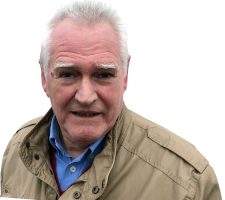search
date/time
 | Yorkshire Times A Voice of the Free Press |

Mike Tilling
Arts Correspondent
1:03 AM 25th November 2023
arts
Review
Classical Music: Maurice Ravel: Daphnis et Chloé (Complete Ballet)
Maurice Ravel: Daphnis et Chloé (Complete Ballet)
Sinfonia of London Chorus, Sinfonia of London
John Wilson (conductor)
Chandos CHSA 5327
https://www.chandos.net/
Sinfonia of London Chorus, Sinfonia of London
John Wilson (conductor)
Chandos CHSA 5327
https://www.chandos.net/

At least, for me, it does. Take Ravel’s Symphonie Choreografique, aka Daphanis et Chloé . I shied away from it for years, thinking it was some serialist bore that would cost hours of listening concentration with nothing to show for it at the end. I had no idea where such a misconception came from, but I resolutely avoided the piece. Pure prejudice, because just a moment’s attention to the opening bars would have dispelled all that delusion.
So what is the reality?
Rarely performed in its early years, Daphnis et Chloé was commissioned by Diaghilev and danced by Ballet Russes hoofers Nijinsky and Karsavina. It is an early piece in Ravel’s oeuvre. When I acquire my own time machine, I would set the dial for the early 20th century just to see them dance.
Rather than try to give a summary of the plot, let me select some details that indicate a narrative: shepherds and shepherdesses; nymphs and gods; rocks that come to life and dance; pirates abducting maidens—get the picture? Yes, we are in the realm of the pastoral, where the countryside is the repository of innocence and the city is emblematic of iniquity. These tropes are typical of late Romanticism, a label that Ravel and many of his contemporaries disliked but which is nevertheless pertinent.
The piece is now much more commonly featured in the concert hall. It has three sections, but there is little development between them. They are related, but each section, while not discrete, is an individual tableau that is reminiscent of Debussy’s afternoon faun. The Nocturne is particularly atmospheric; it seems to be a time of day that lends itself readily to impressionism.
The chorus sings without words and really without adding much to the music. On the other hand, the brass, which grows in importance at the same rate as the chorus, does provide the necessary contrast to the lushness of the strings.
I have no idea what the piece would have sounded like before John Wilson’s intervention, but in this recording, it is just fine. He marshals the resources of the highly regarded session musicians of the Sinfonia of London with his customary skill. Of its type, this is a must for Ravel fans.